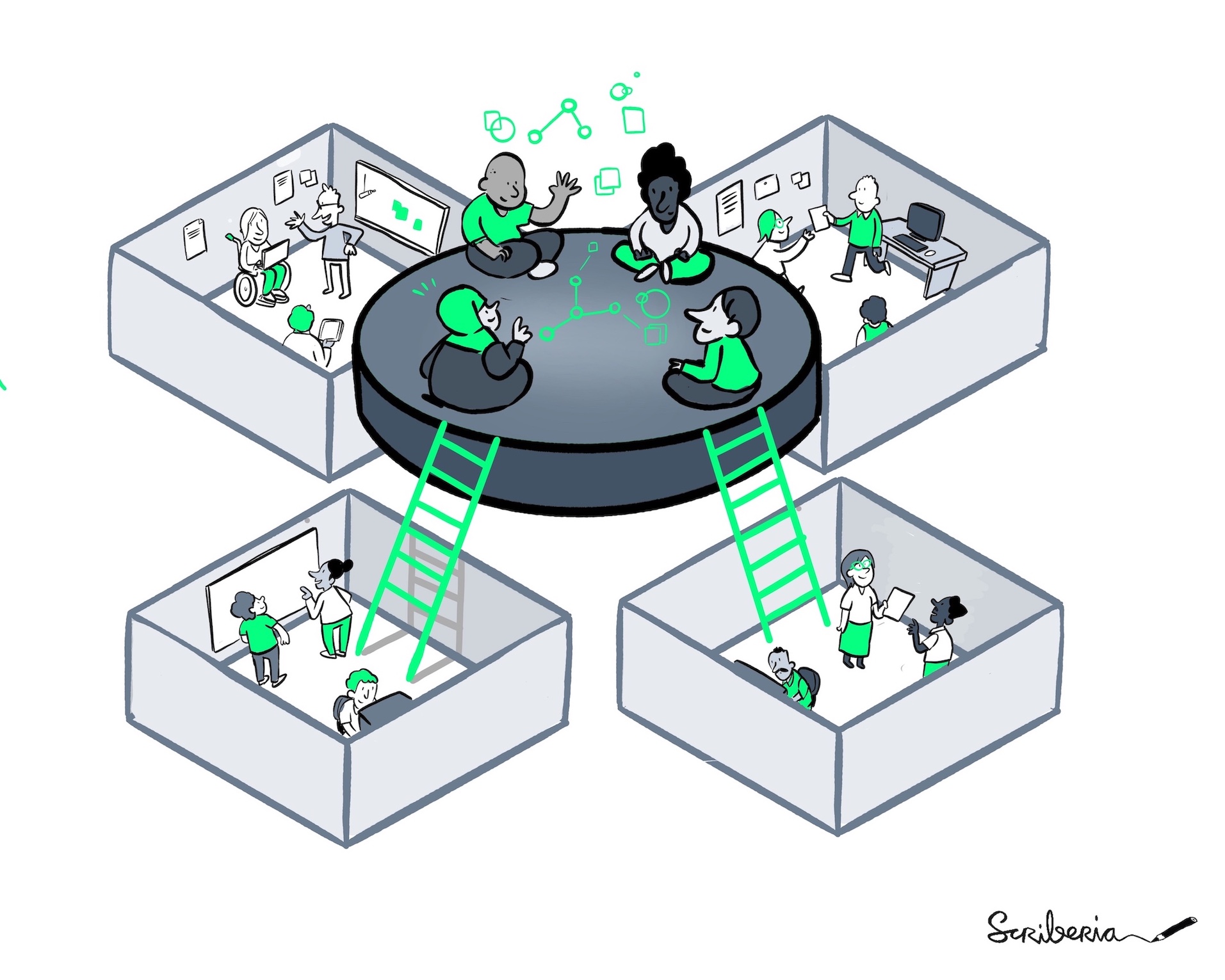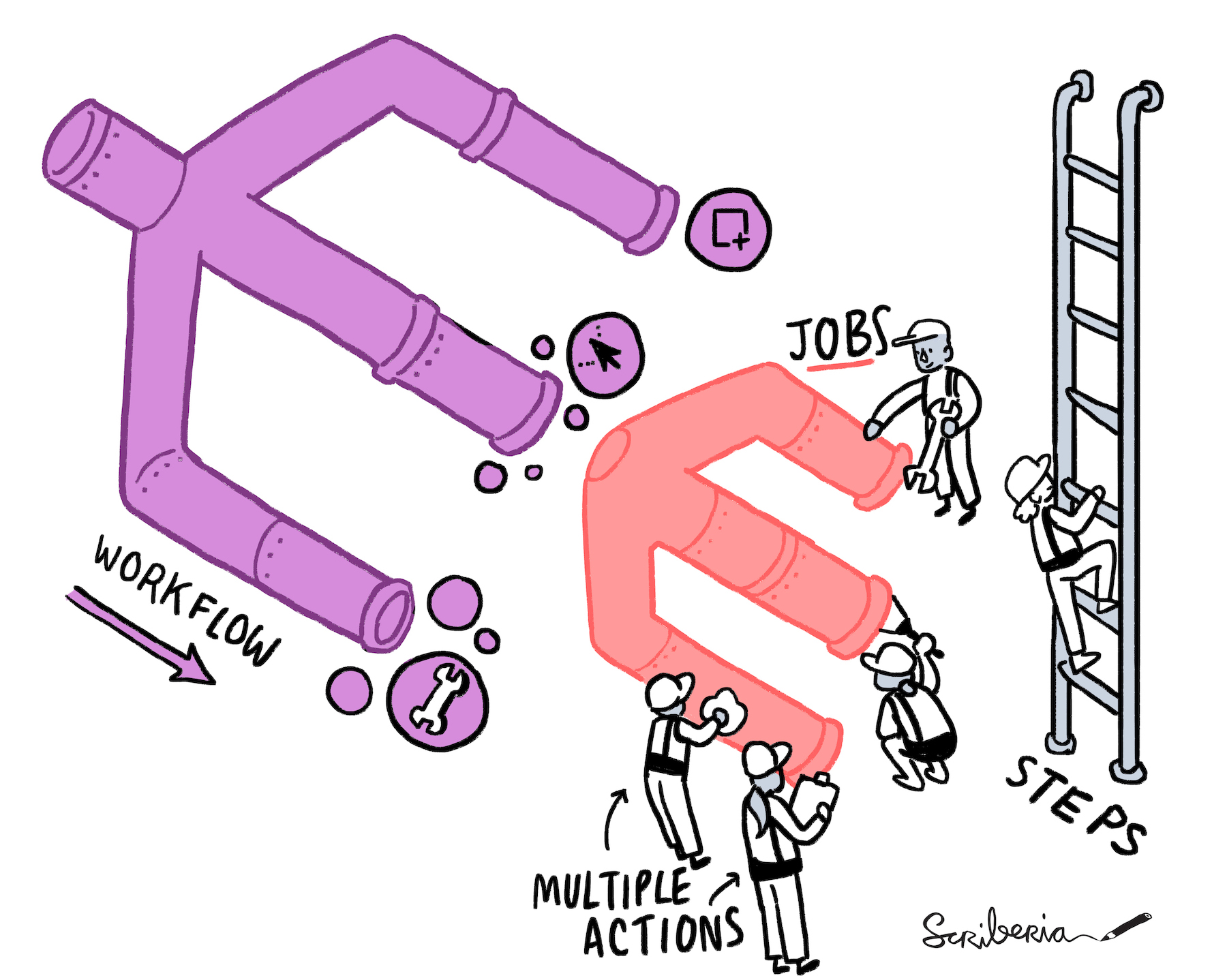Bridging contributor's knowledge and the technology of The Turing Way, an open guide for data science
Jim Madge
The Turing Way/Alan Turing Institute
A personal perspective on the interface of infrastructure and people
What are we trying to achieve?
We are making something for a purpose.
How do we measure progress?
We need contributions.
Is facilitating contributors the most important activity?
Setting the scene
The problem
What we do
Lessons
The Turing Way
 The Turing Way Pathway by Scriberia. Used under CC-BY 4.0 10.5281/zenodo.8169292
The Turing Way Pathway by Scriberia. Used under CC-BY 4.0 10.5281/zenodo.8169292
Me

Setting the scene
The problem
What we do
Lessons
Maintaining quality
 Readable Code by Scriberia. Used under CC-BY 4.0 10.5281/zenodo.8169292
Readable Code by Scriberia. Used under CC-BY 4.0 10.5281/zenodo.8169292
Diverse contributors
 Community Exchange by Scriberia. Used under CC-BY 4.0 10.5281/zenodo.8169292
Community Exchange by Scriberia. Used under CC-BY 4.0 10.5281/zenodo.8169292
In The Turing Way
Very diverse community.
Contributions are mostly prose.
Generally not software engineers.
Everyone can make valuable contributions and technical skills is not a measure of a contributors worth.
Setting the scene
The problem
What we do
Lessons
Why Git and GitHub anyway?
 Project History by Scriberia. Used under CC-BY 4.0 10.5281/zenodo.8169292
Project History by Scriberia. Used under CC-BY 4.0 10.5281/zenodo.8169292
Metatext
Recognising all contributions
 Acknowledge Contributors by Scriberia. Used under CC-BY 4.0 10.5281/zenodo.8169292
Acknowledge Contributors by Scriberia. Used under CC-BY 4.0 10.5281/zenodo.8169292

Support
 First Pull Request by Scriberia. Used under CC-BY 4.0 10.5281/zenodo.8169292
First Pull Request by Scriberia. Used under CC-BY 4.0 10.5281/zenodo.8169292
Even more support
 Remote Book Dash by Scriberia. Used under CC-BY 4.0 10.5281/zenodo.8169292
Remote Book Dash by Scriberia. Used under CC-BY 4.0 10.5281/zenodo.8169292
CI and automation
 GitHub Actions by Scriberia. Used under CC-BY 4.0 10.5281/zenodo.8169292
GitHub Actions by Scriberia. Used under CC-BY 4.0 10.5281/zenodo.8169292
Setting the scene
The problem
What we do
Lessons
Building a community takes effort
 Community by Scriberia. Used under CC-BY 4.0 10.5281/zenodo.8169292
Community by Scriberia. Used under CC-BY 4.0 10.5281/zenodo.8169292
Know your contributors
 Goat Heard No. 2 by Scriberia. Used under CC-BY 4.0 10.5281/zenodo.8169292
Goat Heard No. 2 by Scriberia. Used under CC-BY 4.0 10.5281/zenodo.8169292
Trust in CI
 Continuous Integration by Scriberia. Used under CC-BY 4.0 10.5281/zenodo.8169292
Continuous Integration by Scriberia. Used under CC-BY 4.0 10.5281/zenodo.8169292
Version control is not optional
 Version Control by Scriberia. Used under CC-BY 4.0 10.5281/zenodo.8169292
Version Control by Scriberia. Used under CC-BY 4.0 10.5281/zenodo.8169292
Be flexible …
 Article Types by Scriberia. Used under CC-BY 4.0 10.5281/zenodo.8169292
Article Types by Scriberia. Used under CC-BY 4.0 10.5281/zenodo.8169292
But know when to be strict
- Don't knowingly break CI.
- Don't knowingly introduce bugs.
- Don't introduce problems which you expect someone else to fix.
Acknowledgements
Alexandra Araujo Alvarez and Anne Lee Steele (Project and Community Managers)
Scriberia, who we work with to make the excellent, openly licensed, illustrations
All Turing Way team members and contributors!



















